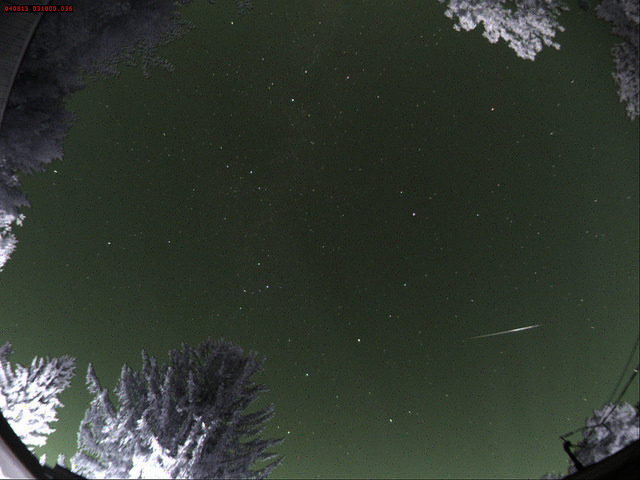It’s that time of year again, when the most famous of all meteor showers puts on its best display.
Why are the Perseids such an all ‘round favorite of sky watchers? Well, while it’s true that other annual meteor showers such as the Quadrantids and Geminids can exceed the Perseids in maximum output, the Perseids do have a few key things going for them. First, the shower happens in mid-August, which finds many northern hemisphere residents camping out under warm, dark skies prior to the start of the new school year. And second, unlike showers such as the elusive Quads which peak over just a few hours, the Perseids enjoy a broad span of enhanced activity, often covering a week or more.
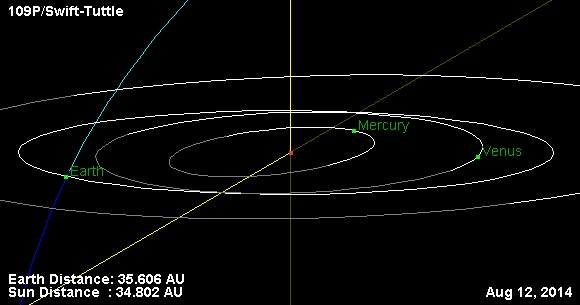
These are all good reasons to start watching for Perseids now. Here’s the low down on the Perseid meteors for 2014:
The History: The Perseids are sometimes referred to as “The Tears of Saint Lawrence,” who was martyred right around the same date on August 10th, 258 A.D. The source of the shower is comet 109P Swift-Tuttle, which was first identified as such by Schiaparelli in 1866. The comet itself visited the inner solar system again recently in 1992 on its 120 year orbit about the Sun, and rates were enhanced throughout the 1990s.

Unlike most showers, the Perseids have a very broad peak, and observers and automated networks such as UKMON and NASA’s All Sky Camera sites have already begun to catch activity starting in late July.
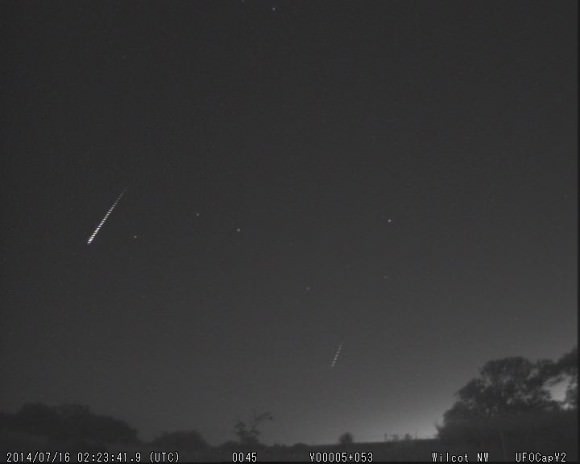
In recent years, the rates for the Perseids have been lowering a bit but are still enhanced, with ZHRs at 91(2010), 58(2011), 122(2012), and 109(2013). It’s also worth noting that the Perseids typically exhibit a twin peak maximum within a 24 hour span. The International Meteor Organization maintains an excellent page for quick look data to check out what observers worldwide are currently seeing. The IMO also encourages observers worldwide to submit meteor counts by location. Note that the phase of the Moon was near Full in 2011, with observing circumstances very similar to 2014.
The Prospects for 2014: Unfortunately, the 2014 Perseid meteors have a major strike going against them this year: the Moon will be at waning gibbous during its peak and just two days past Full illumination. This will make for short exposure times and light polluted skies. There are, however, some observational strategies that you can use to combat this: one is to place a large building or hill between yourself and the Moon while you observe — another is to start your morning vigil a few days early, before the Moon reaches Full. The expected Zenithal Hourly Rate for 2014 is predicted to hover around 90 and arrive around 00:15 to 2:00 UT on August 13th favoring Europe, Africa and the Middle East.
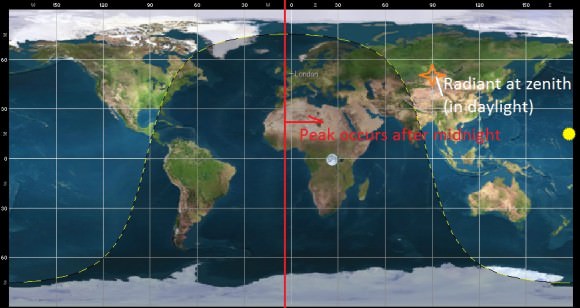
The Radiant: It’s strange but true: meteor shower radiants wander slightly across the sky during weeks surrounding peak activity, due mostly to the motion of the Earth around the Sun. Because of this, the radiant of the Perseids is not actually in the constellation Perseus on the date that it peaks! At its maximum, the radiant actually sits juuusst north of the constellation that it’s named for on the border of Camelopardalis and Cassiopeia. This is a great pedantic point to bring up with your friends on your August meteor vigil… they’ll sure be glad that you pointed this out to ’em and hopefully, invite you back for next year’s Perseid watch.
The actual position of the radiant sits at 3 Hours 04’ Right Ascension and +58 degrees north declination.
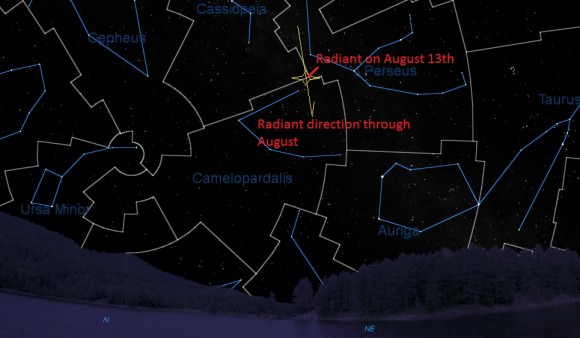
Meteor-speak: Don’t know your antihelion from a zenithal hourly rate? We wrote a whole glossary that’ll have you talking meteors like a pro for Adrian West’s outstanding Meteorwatch site a few years back. Just remember, the crucial “ZHR” of a shower that is often quoted is an ideal extrapolated rate… light pollution, the true position of the radiant, observer fatigue and limited field of view all conspire to cause you to see less than this predicted maximum. The universe and its meteor showers are indeed a harsh mistress!
Observing: But don’t let this put you off. As Wayne Gretsky said, “You miss 100% of the shots that you don’t take,” and the same is true with meteor observing: you’re sure to see exactly zero if you don’t observe at all. Some of my most memorable fireball sightings over the years have been Perseids. And remember, the best time to watch for meteors is after local midnight, as the Earth is turned forward into the meteor stream. Remember, the car windshield (Earth) gets the bugs (meteors) moving down the summer highway…
Good luck, and let us know of those tales of Perseid hunting and send those meteor pics in to Universe Today!

